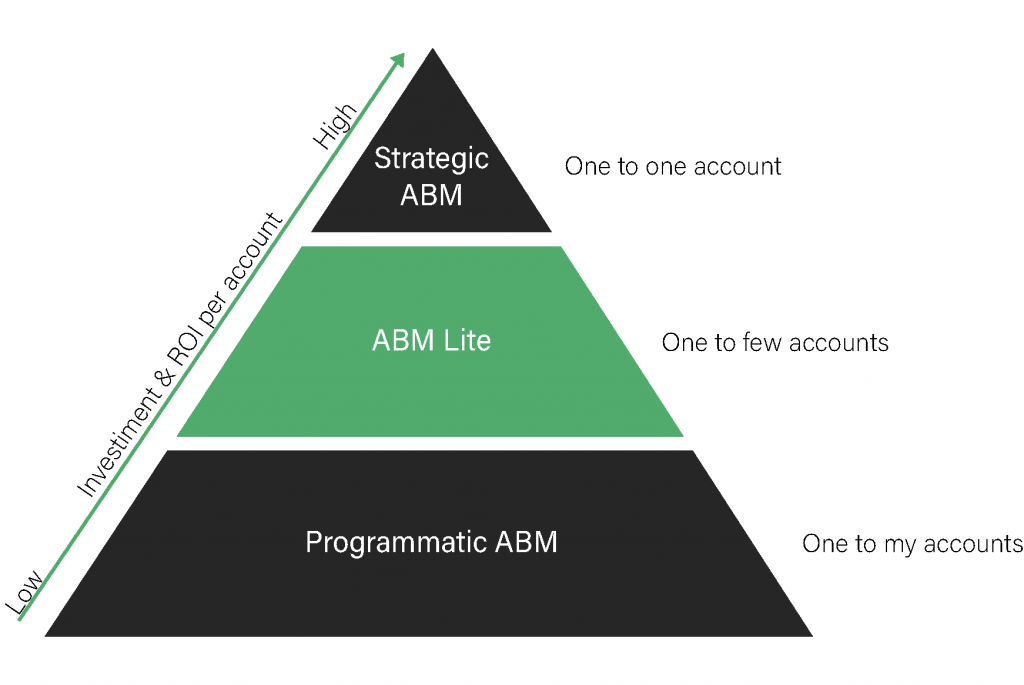There are many possible ways of looking for new customers to boost the client portfolio. However, the most critical aspect is identifying a method that generates a return on investment in commercial terms.
Sales and marketing professionals can indeed rely on many tools and techniques to achieve their company growth goals. Nevertheless, sometimes their efforts do not bear fruits despite the dedication and the passion they have put in place.
As a matter of fact, the customer acquisition process is highly complex. In each field, especially concerning innovative products, it is necessary to implement a marketing or business development strategy able to create the right conditions to generate commercial value. If you are interested in this topic, here is an interesting article by Denise Lee Yohn published in HBR: Why Great Innovation Needs Great Marketing.
In the following post, we will describe the process that here in Vehnta we suggest to our B2B customers that aim at increasing their client portfolio. Clearly, it is not a schema to apply with a simple “copy and paste” for every business, but a recipe that suggests some guidelines that, if used as part of a broader and custom strategy, can result in significant commercial satisfaction.
As usual, it is the collaboration between our customers and us, on a shared path, that can make a real difference in the market.
Strategic-operational premise
The starting point for a customer acquisition strategy is the confirmation of the profitability of the proposed business idea. The business will have to face two levels of analysis: the first is the emotional one, while the second is the rational one. For the first level of the analysis, we will have to cope with the profound reason for the business’s existence. During the second step, we will examine the rational aspects that will help the potential customer rationalize its offer. For further information, click here: From strategy to customer acquisition.
Once the offer has been validated at a strategic level, before starting with commercial activities, we will have to analyze the current performance of the selling company to understand in detail the starting situation. In Vehnta, we suggest an approach based on the sales funnel: starting from all the potential customers and reaching the closing of the deal with the most qualified opportunities, we intend to improve the performance of crucial steps, thus optimizing the final performance. To know more, click here: Sales funnel: how to generate commercial value.
Once the profitability of the proposed business idea has been defined and the sales funnel has been analyzed, it is time for action. At this point, we indeed help the customer develop the strategic approach we have suggested for our B2B clients: Account-based marketing (ABM).
What Account-based marketing (ABM) is
Account-based marketing (ABM) refers to a strategy oriented to directly strike the potential target interested in the offered product or service. It is a strategy characteristic of the B2B market, used by the most dynamic companies to increase their client portfolio. This strategy implies that all marketing actions aim to draw attention and engage the campaign’s primary target or the target account (that’s why it is called ABM).
The main target could be the buyer or purchasing manager for major companies or the entrepreneur or a player close to decision-makers in the case of smaller businesses. Either way, it is necessary to highlight that we focus on a targeted campaign that may be managed with massive tools initially but always with clear and defined objectives in mind.
How an ABM strategy works
With a view to increasing client portfolio, implementing an ABM strategy, maybe assisted by the right company, can really make a difference. The implementation process of this strategy is standardized in its steps, but it implies great customization that takes into account business, sector, and company for each phase. Below we describe in detail the steps that characterize an ABM strategy.
- Identifying target accounts – The first step is the choice of the targets. It is a fundamental activity that will have to involve both sales and marketing. Starting from a blank sheet, we will define the interesting companies and, if possible, also the target interlocutors or roles. It is an activity that starts from the expectations of sales and potentially of the board to which marketing, with its tools, could add more lateral targets, which are not yet on the sales radar, or borderline to one’s own sector with a view to Blue Ocean strategy. To deepen your knowledge of the concept of Blue Ocean, click on the following link and focus on the paragraph “Choosing the right target” of our post, From strategy to customer acquisition.
- Analyzing purchasing system – Once potential customers have been defined as described in the previous point, it is time to widen the starting cluster inside the target companies. In the world of B2B, decisions are hardly made by a single interlocutor. Usually, it is indeed necessary to find the players that constitute the purchasing system, the so-called decision-making unit – DMU, to understand how to proceed. It could be necessary for each of the players involved to think about a custom message beyond their identification and the creation of a contact, something that could directly create energy and movement.
- Choosing the contact channels – Usually, players belonging to the purchasing system are people with different roles and objectives and, usually, different interests. For this reason, we can not take for granted that the contact channel we have chosen for one of these players is also correct for another one. In a specific case, the right contact channel might be sending emails. In other, it will be online advertising to motivate the target, while in other cases, again, it is a call or a face-to-face meeting. There is no one fixed rule for everyone. However, it is undoubtedly true that we have to define the right communication channel for each contact.
- Creating content – Once we have chosen the target, analyzed the purchasing system, and defined the channels through which to contact the selected people, it is time to create the contents that we will use at the distribution stage. These contents can be texts for emails, maybe for a marketing automation strategy, posts for the blog with a view to content strategy, pictures, or videos. The important thing is to choose the right tone of voice and the right topics to deliver.
- Launching the campaign – Now that we have defined all the previous points, we can launch the campaign. This phase, the real execution of the process, is undoubtedly the most delicate one. Indeed, we have to align all the information and contents that we have previously prepared in order to channel the targets into the projected funnel by ensuring that they can interact with all the touchpoints of the customer journey. It is a matter of implementing what we have planned, where perseverance and attention to detail make the difference. Here in Vehnta, we have our strategy for the implementation of the campaign. For further information, contact us by filling in the form at the end of the page.
- Constantly monitoring the campaign – This stage is crucial during the implementation of the campaign because, through the first available data, it is possible to refute or confirm the previously made choices. Given that it is a highly complex activity, sometimes we have to change some previously set parameters. It is a normal optimization process that, however, includes constant data monitoring.
- Analyzing the results – At the end of the campaign, it is necessary to analyze all the available data. This activity is useful for calculating the campaign ROI (Return On Investment) and learning from previous experience. Analyzing the results is the last step for an ABM strategy that will become the first step to implementing a new cycle, considering customer acquisition as a cyclical process.
The advantages of choosing an ABM strategy
The advantages of an ABM strategy can be summarized in an improvement of ROI compared to the one we can obtain with other customer acquisition campaigns. Investment reduction, given by more selected costs considering the restricted target, added to better selling performance, so a better return will indeed lead to a more positive outcome than one of the other campaigns.
By its very definition, An ABM strategy aims at the right target with which it is possible to establish a relationship that can bear fruits over time and potentially also close the first deal directly. Therefore, we are talking about tailor-made campaigns: conceived and realized specifically for the person or the department that we are interested in inside the target company.
The different types of ABM strategy
Now that we have defined Account-based marketing, the steps to take to implement this strategy, and its advantages, we can describe the different kinds of approaches in the process:
- Strategic ABM
- ABM Lite
- Programmatic ABM
Strategic ABM – It is an approach to ABM carried out on highly strategic accounts. Usually, it is a strategy applied on very few targets, even on a very important single target. Indeed, it is the approach that guarantees more verticality.
ABM Lite – It is an approach to ABM carried out on little clusters that present similar aspects. Usually, they are clusters of players of the same sector who have the same goals and face the same challenges.
Programmatic ABM – It is an approach to ABM carried out on a large scale. It is a more complicated process because it requires a more significant amount of data and more innovative tools to be implemented. It is certainly the approach that, in less time, guarantees the greatest number of opportunities.

Some argue that, despite the previous definitions that professionals widely confirm, ABM Lite and Programmatic ABM are not actual Account-based marketing strategies. According to us in Vehnta, they are instead absolutely efficient strategies to boost client portfolios. As always, however, it is necessary to define with the customer its commercial objectives to use the most appropriate tools and strategies to reach the targets.
Is ABM the best choice to increase client portfolio?
As previously stated, the advantages of an ABM strategy are manifold. Together with the customer here in Vehnta, we immediately define which ABM approach can be the most interesting one for its goals. The activities to implement could be to contact a limited number of buyers, reconstruct the purchasing systems of the most important targets, or implement a campaign targeted at a cluster of companies to maximize the efforts.
Do you want to know more? Fill in the following form.




